LITE DAC-AH

What a talent in naming products. AH. Wow!
Subconsciously, when I hear TDA1543, it (the code, not music)
sounds "so close" to TDA1541 that I presume the quality is very very
similar.
Philips themselves call this chip - a budget
one. What it means budget we
know - cutting corners, compromising, skimping, etc.
But maybe simplicity is not that bad after all, especially that this
chip has cult following, because it plays well, it is easy to
apply,
easy to buy and CHEAP.
So cheap in fact, that for the pocket change of 108 US bucks, the price
of taxi ride from Copenhagen airport downtown, we can get eight of
these chips mounted on wonderful redish PCB with GOLD traces and
Crystal top of the line receiver CS8414 - same one as in Audionote Dac
4 Signature- and with SP/DIF input, Toslink input, OS-CON premium
caps
around the CS receiver, nice and simple output stage with only one
opamp per channel, built in, triple regulated power supplies for
digital part, additional dual regulators for output stage,
premium
brand Dale resistors, Non-Oversampling topology and triple AC power
rectification. There is even possibility to connect this DAC in I2S
mode, far far better than SP/DIF.
I mean can life get any better than that? Better - maybe, but cheaper ?
no.
(one year later - I rank this DAC even higher. I would recommend it
even if the price was 1000 Euro, it is really THAT GOOD)
http://diyclub.biz/catalog/advanced_search_result.php?keywords=DAC-AH&x=27&y=7

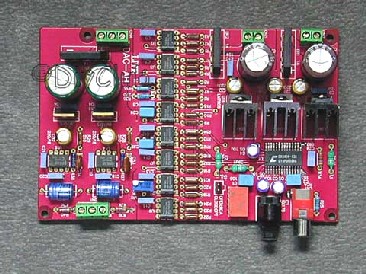
DATASHEET DAC TDA1543
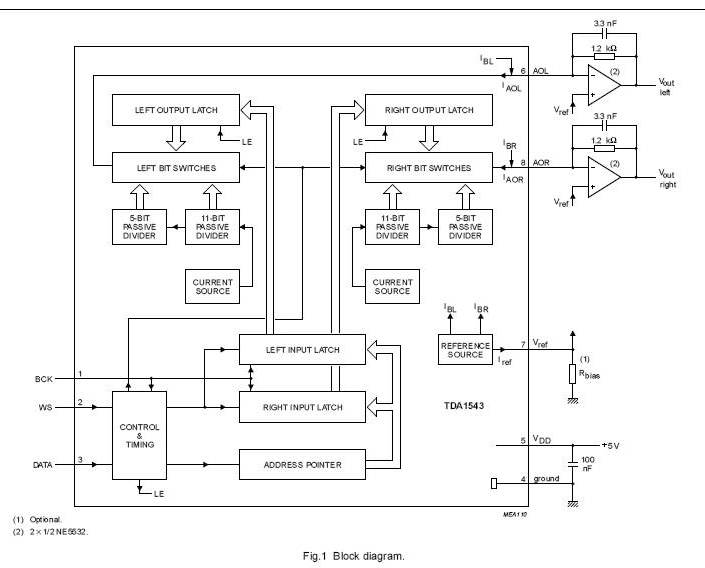
PINNING
SYMBOL PIN DESCRIPTION
BCK 1 bit
clock input
WS 2
word select input
DATA 3 data
input
GND 4
ground
VDD 5
+5 V supply voltage
AOL 6
left channel current output
Vref 7
reference voltage output
AOR 8
right channel current output
This DAC is a CURRENT OUT type.
What is the point of paralleling TDA1543 DACS?
Some people mount multiple DACs in a "tower" one on another (tower of
power ???) which is called piggybacking if I am not mistaken.
That is
one way of doing it - but it creates problems with heat dissipation. So
the tower needs a radiator in between each DAC chip.
Here the use of dual layer PCB allows for flat mounting on one surface,
even if electrically it is the same as piggyback.
The benefits of paralleling:
1. Subjectively and empirically some people found it to sound better.
2. If the conversion process "goes out of specs" in one chip or
another - paralleling causes all errors to average. Its sort of
equivalent of 8 men carrying the coffin. If one lazy bastard carries
less, the others spread the load so the coffin anyway floats smoothly.
I am sorry for such sad association.
3. The current output I_out is so "weak" that
multiplication makes it exactly precisely 8 times stronger. Some purist
audiofetishists stop there and use the 8x signal as the ready output to
the amp. (I found it to sound quite boring and dull) Others amplify it
with op-amp as final I/U "converter". I haven't tried it, but you can
try it and also start swapping opamps in their sockets.
We, intelligent and rational people - use a tube output stage to send
the signal in all it's intact glory, beauty and power - to the amp.
Lets see if it makes sense.

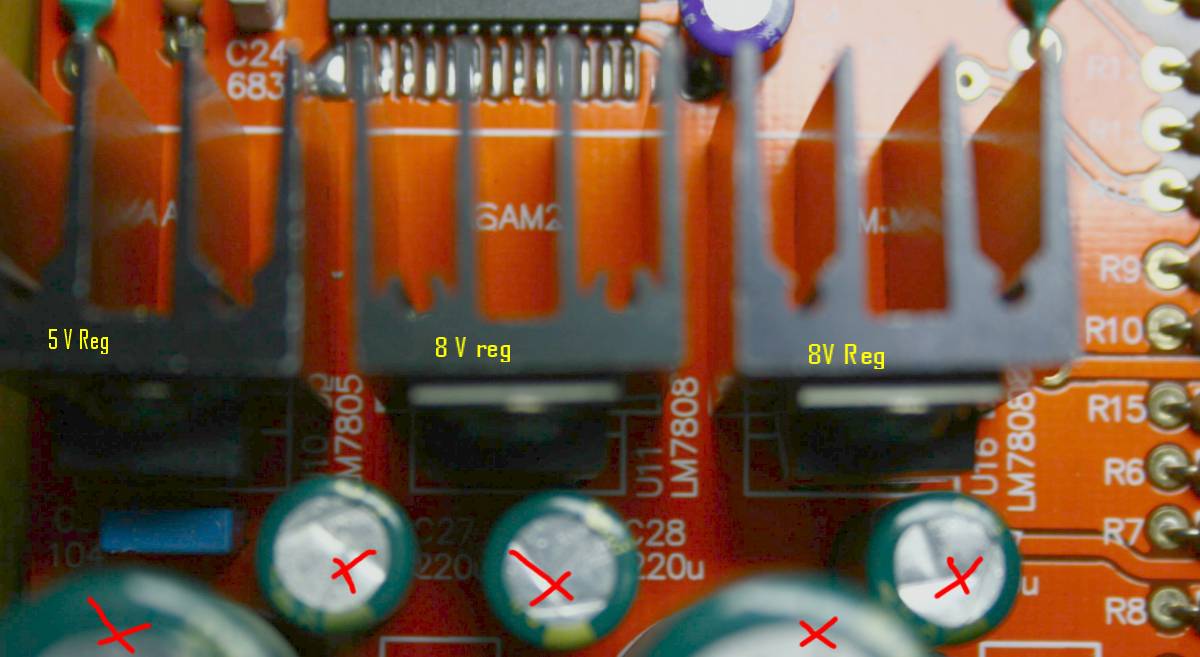
Three regulators: separate for Crystal receiver and separate for DAC
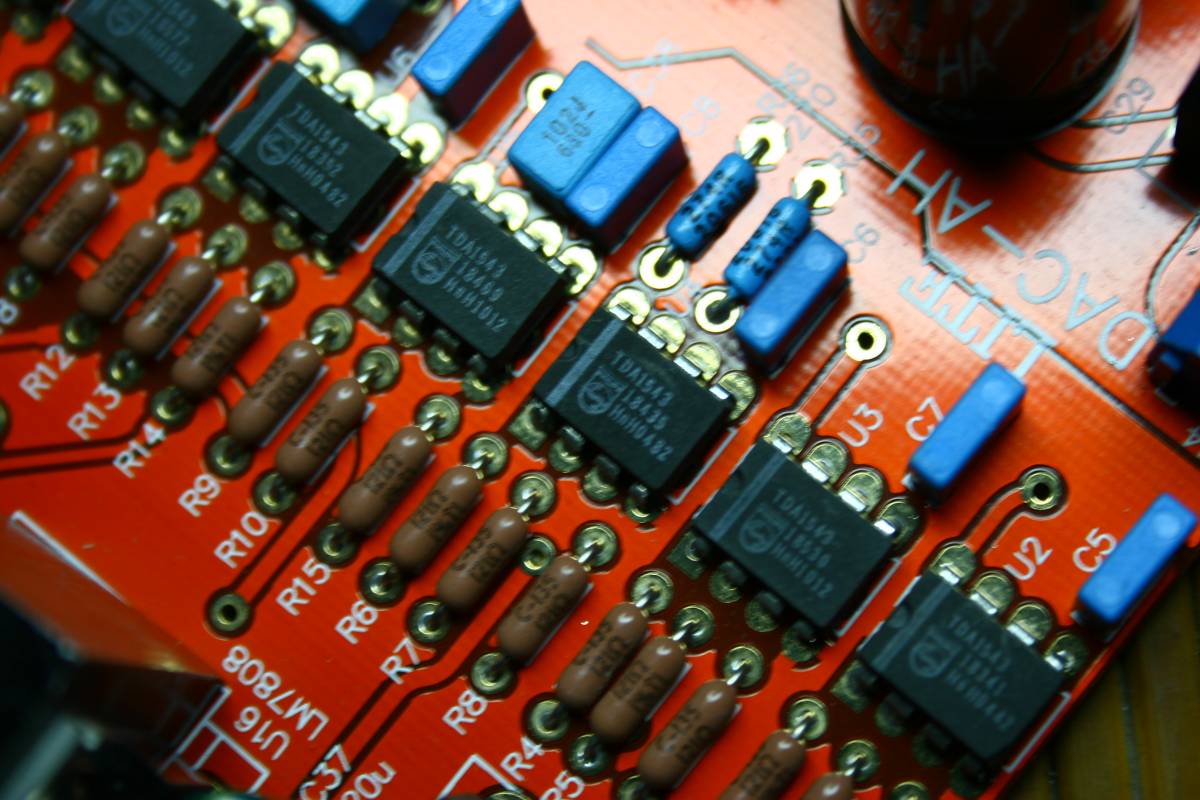
Brown resistors are DALE brand. The connection from CS8414 to dacs is
purely I2S direct.
No oversampling in sight.
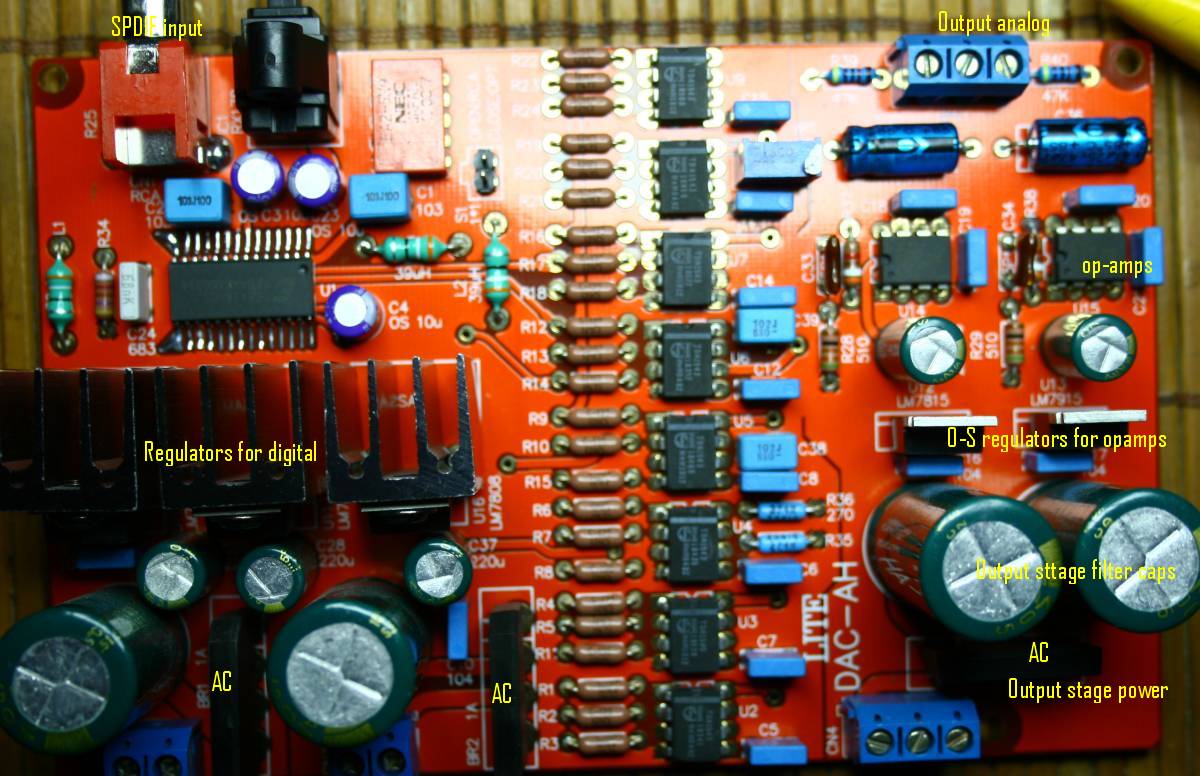
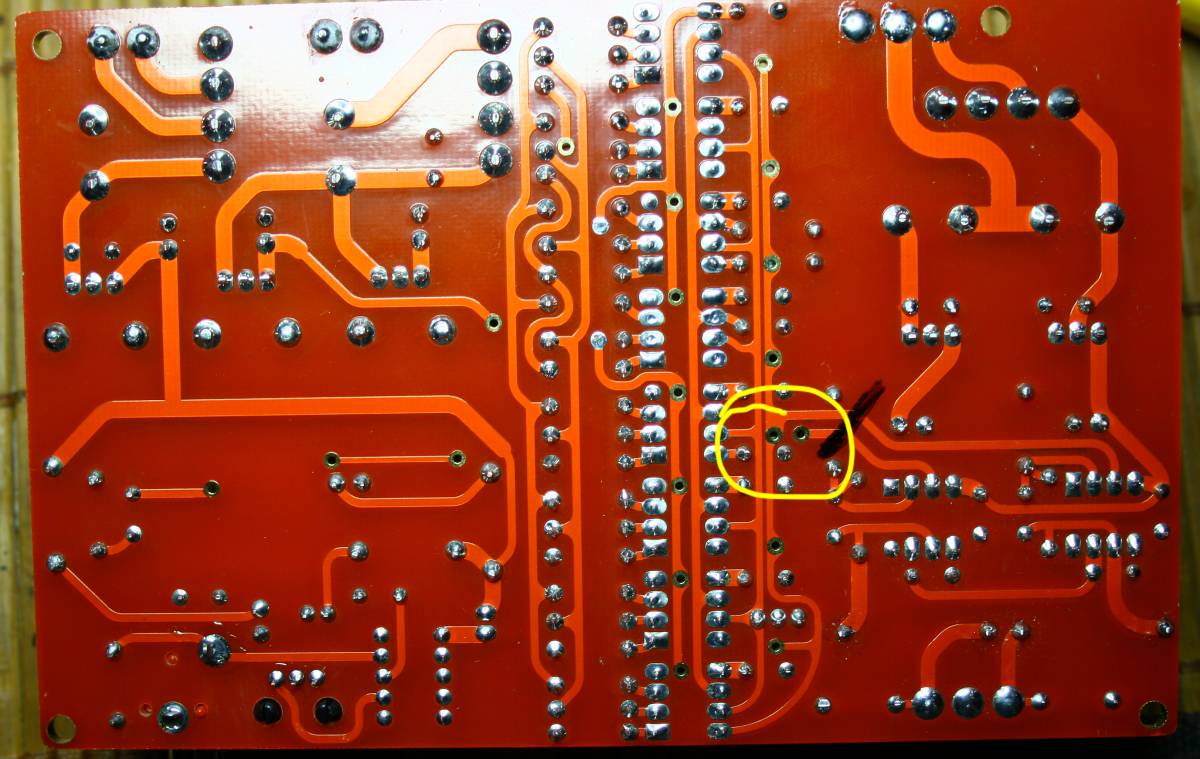
After cutting along the black mark we split the DAC section from the
following op-amp output stage.
The combined eight DAC signals - both left and right - can be stolen
from the two golden holes in the yellow circle. Straight to tube
grids, via a capacitor (because there is a 3 V DC offset). I used MKP
caps - 2,2 uF.
I use NO RESISTOR AT ALL. No conversion! It sounds definitely best this
way.
The Fikus version of Lite DAC AH with lampizator
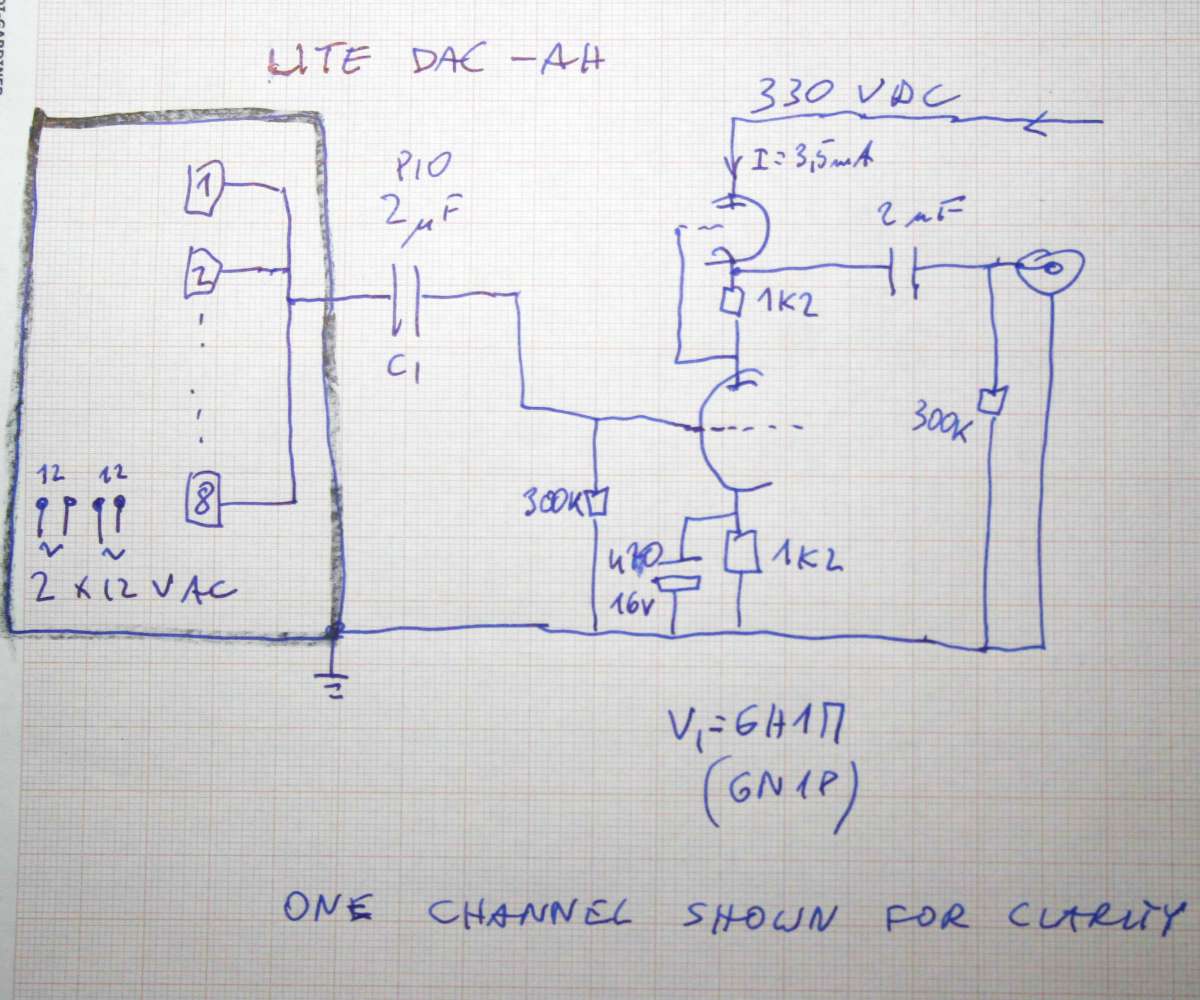
Please note that the DAC will be louder than standard. Of course the
tube could be anyone - ecc81, ecc82, e801s, 6sn7gt, 6H6P, 6H8P, 6H2P,
and many more.
I used 330 V DC because I had such transpormer at hand, but we could
use as little as 130 V of anode, and reduce the Rk proportionally.
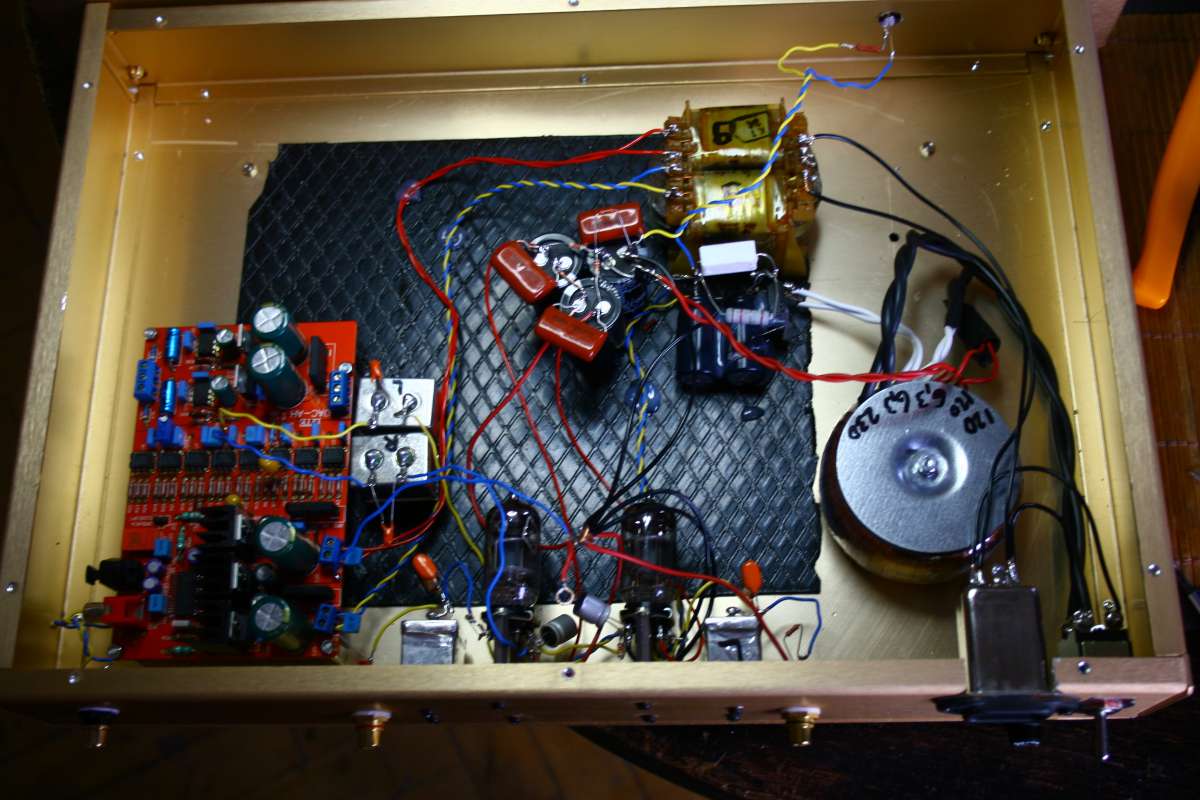
I first glued the self adhesive bituminous mat to the floor, and then
the elements are glued to the mat with hot melt. That is a secure and
quick way of fixing caps and stuff.
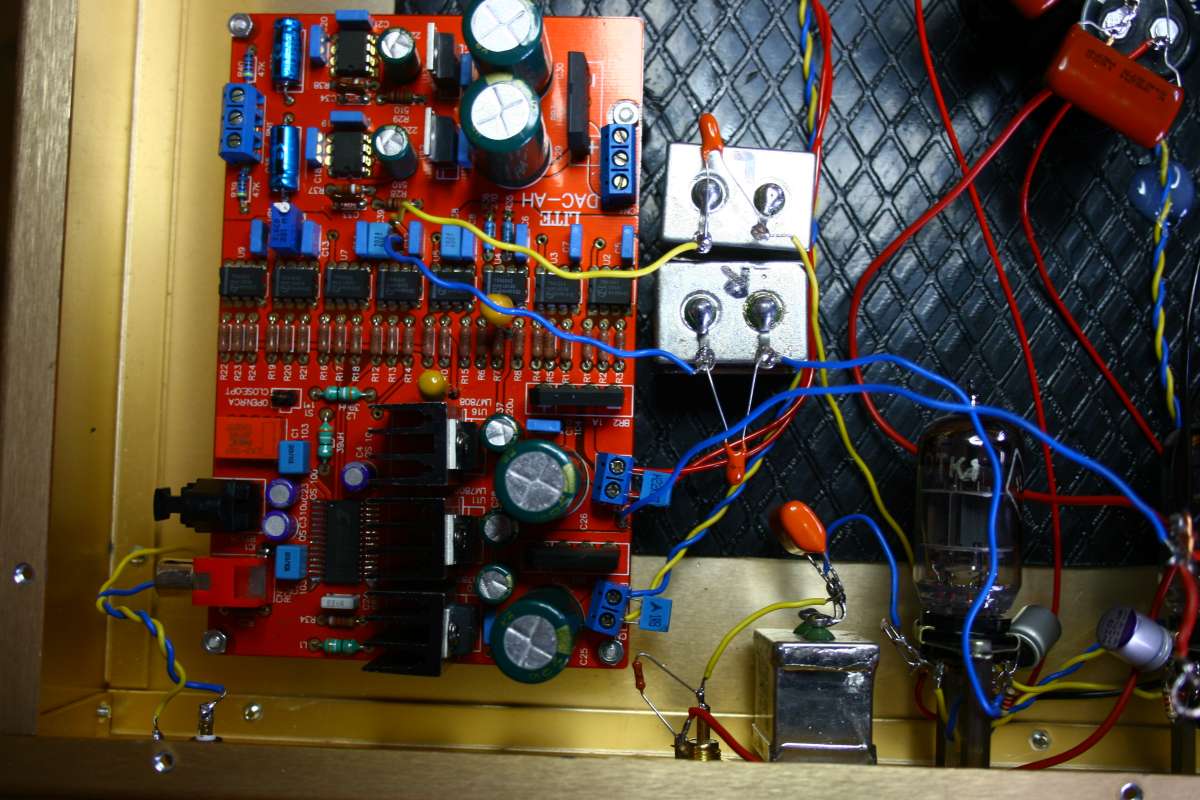
The large shiny cubic cans are paper in oil military caps from Poland -
very very good sounding.
I used them both before and after the tubes. 2uF is just ideal size.
I gave them a bypass orange cap - to improve transparency. Is it
audible however - I can't swear.
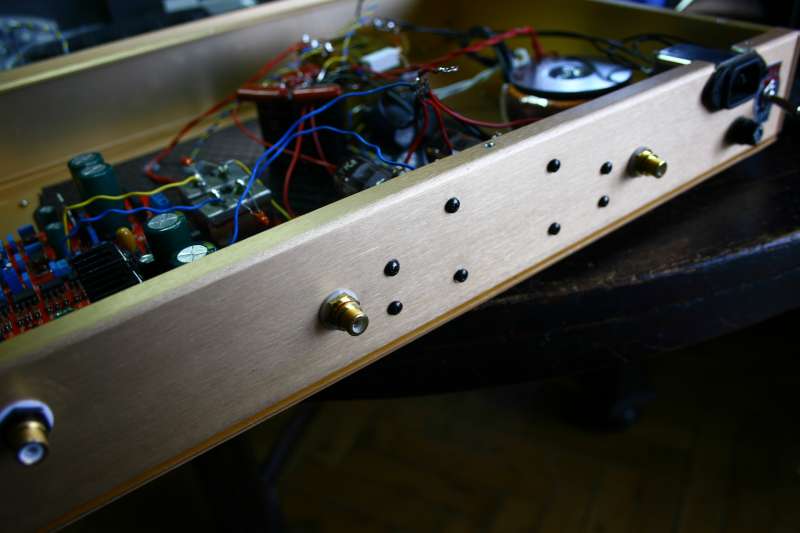
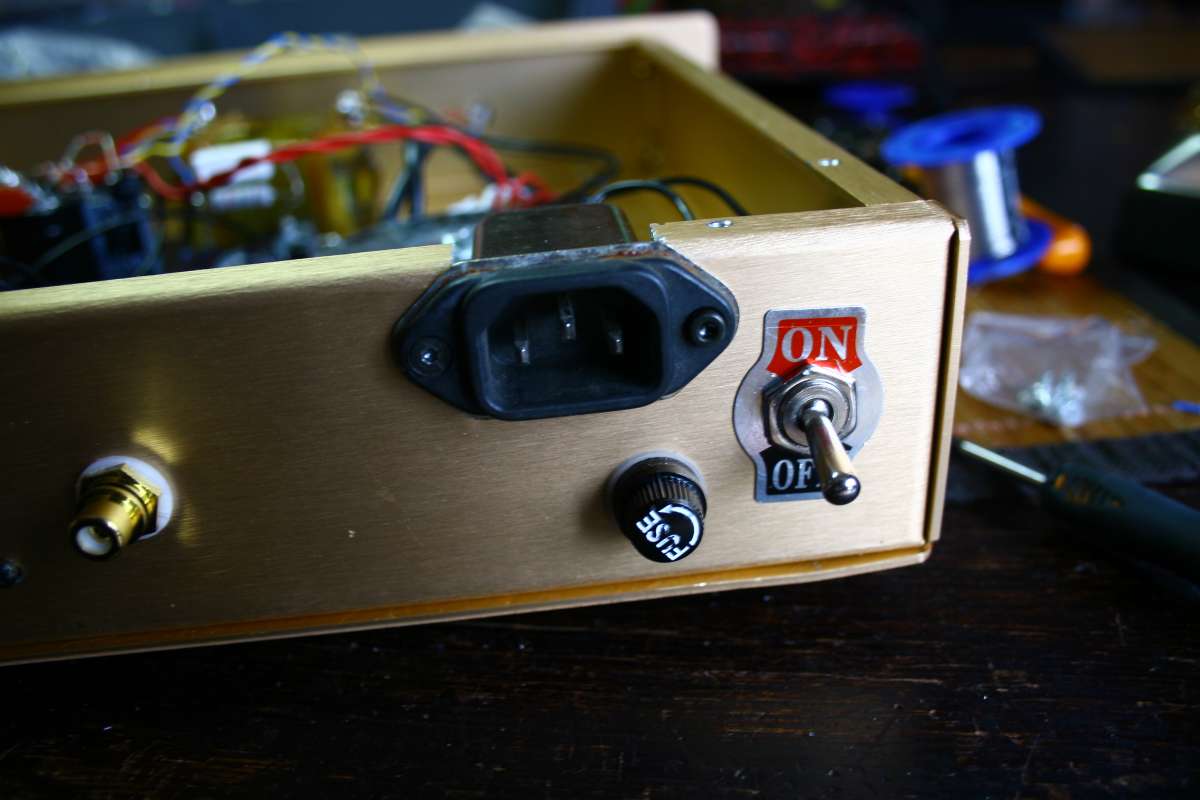
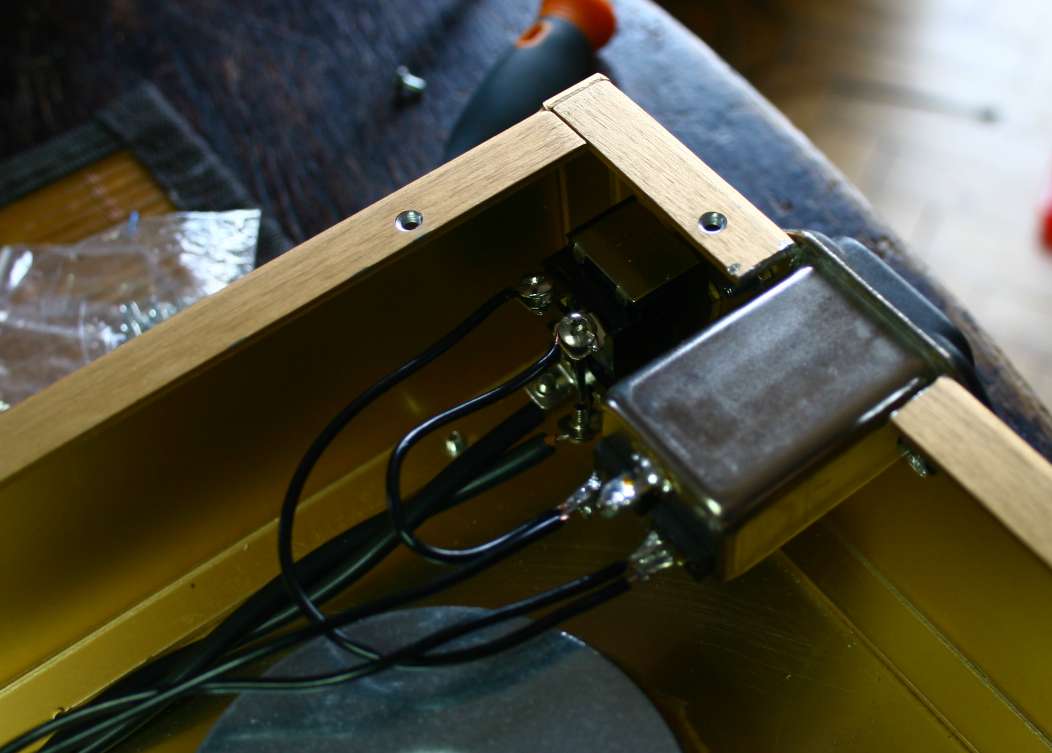
I used IEC socket with an integrated filter for RFI.
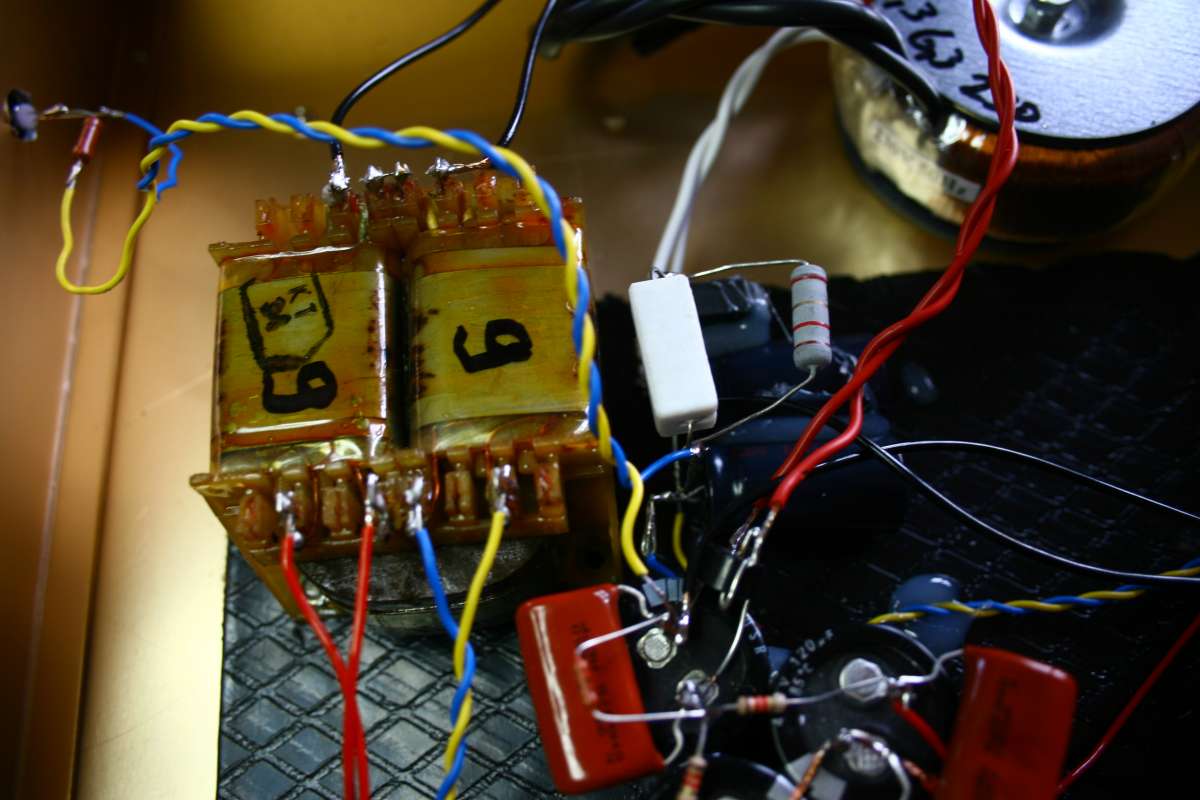
I recycled the double 9V transformer from some old item from electronic
surplus shop.

The cathode bypass is OSCON SEPC - the most transparent electrolyte
that I know of. I used 470 uF/16 here and it works just fine - it
improves bass to an enormous level.
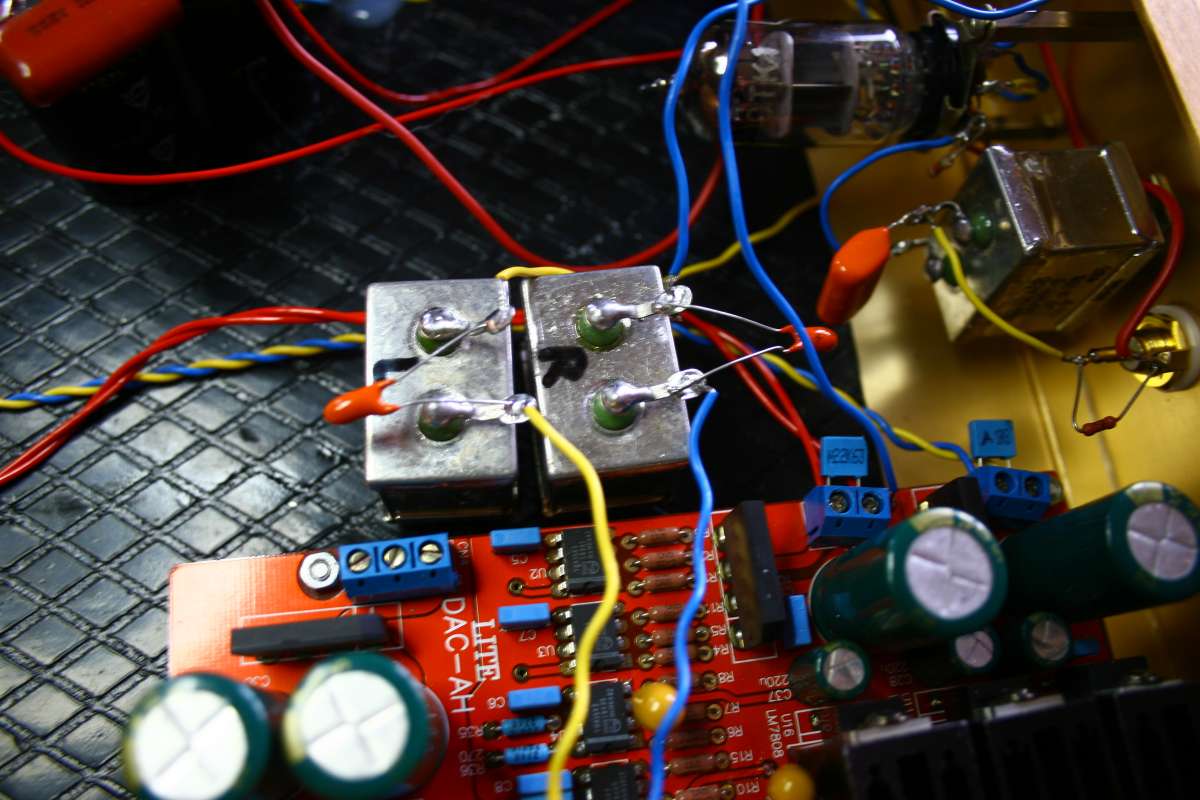

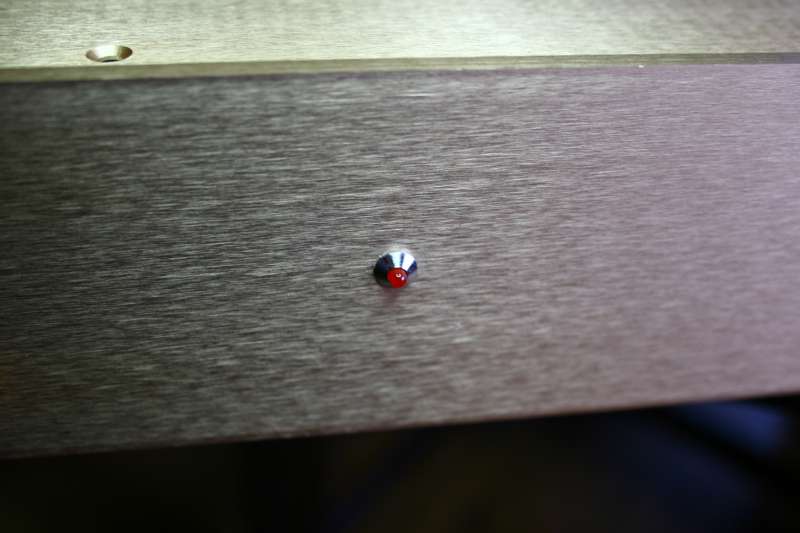
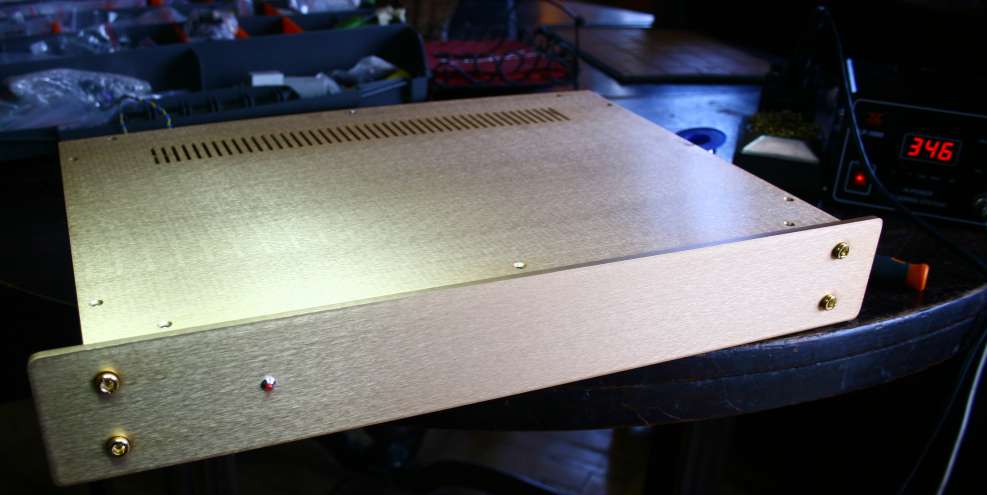
How does Lite DAC AH sound then ?
In the beginning I was not impressed, even after some
"conversion" resistor tweaking
(trying from 20 Ohms - all the way to 2K) - I was unhappy. Frankly -
the
resistor conversion made the unit sound like shit. I don't understand
why - others don't report such phenomenon.
Finally I threw the resistor away and bingo - music explodes with 3d
space and
full energy. As if someone removed the chains from the DAC's
feet. It can run, jump and fly now.
The sound is very pleasing, not too detailed, focusing on the lively
and energetic midrange a'la TDA1540. Bass is very strong and deep, if
not exceedingly fast. But I would not call it wooly, not at all. In
fact, the bass has so many shades and nuances, so much information, it
may be one of the best bass players ever.
Trebles are a little bit missing compared to the reference
Buffalo DAC but that's not surprising. Compared to the TDA1541 -
trebles are on the same level. But bass is definitely more
interesting from the AH than from a single TDA1541A. Comparable to
paralleled TDA1541A.
Overall - it is not TDA1541AS1 - make no mistake, but I would seriously
recommend this dac to the best friend. VERY well made product, easy to
apply, and
fun to listen to. And I am sure it is FAR FAR from optimum application
and lampization, which can be achieved
with some careful tuning. There are probably more tuning tips on the
net for TDA1543 than for all other DACS put together.
==================================
A week later: I found the sound of AH addictive. It has something that
the other DACs are sometimes lacking. It is veeery musical.
There is "more sound in the sound". More soul in it. I don't know how
to describe it.
Lets take singing - if we compare a single vocalist to a choir of 8
singers, the choir sounds more interesting but the singer solo is
easier to understand. It has more focus. So I think 8 dacs loose some
surgical precision but gain the musicality of a choir. I really love
it. It ranks equal with the best DACS I heard in my life. And the
bass slam is breathtaking.
Some other TDA1543 DAC stores and stories:
DAC4 (sic!)
it has better capacitors, and only 4 DACS which may be actually a
better choice. That seems to be a better DAC than LITE, even if almost
identical.

http://www.analogmetric.com/store/goods.php?id=96
http://www.audiocircle.com/circles/index.php?topic=32778.msg291039




















